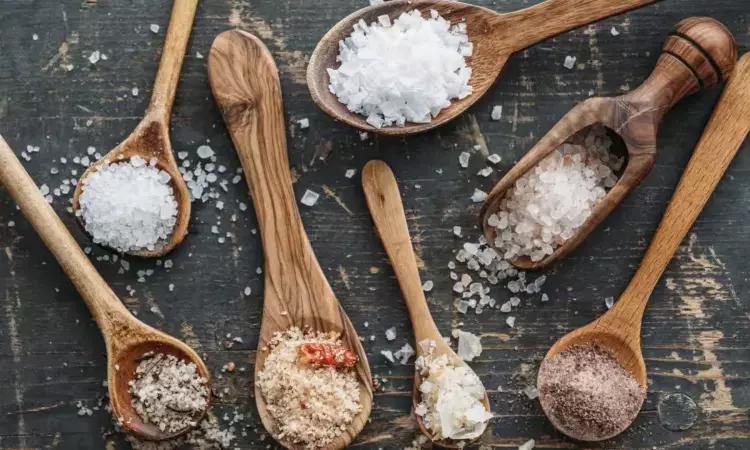- Home
- Medical news & Guidelines
- Anesthesiology
- Cardiology and CTVS
- Critical Care
- Dentistry
- Dermatology
- Diabetes and Endocrinology
- ENT
- Gastroenterology
- Medicine
- Nephrology
- Neurology
- Obstretics-Gynaecology
- Oncology
- Ophthalmology
- Orthopaedics
- Pediatrics-Neonatology
- Psychiatry
- Pulmonology
- Radiology
- Surgery
- Urology
- Laboratory Medicine
- Diet
- Nursing
- Paramedical
- Physiotherapy
- Health news
- Fact Check
- Bone Health Fact Check
- Brain Health Fact Check
- Cancer Related Fact Check
- Child Care Fact Check
- Dental and oral health fact check
- Diabetes and metabolic health fact check
- Diet and Nutrition Fact Check
- Eye and ENT Care Fact Check
- Fitness fact check
- Gut health fact check
- Heart health fact check
- Kidney health fact check
- Medical education fact check
- Men's health fact check
- Respiratory fact check
- Skin and hair care fact check
- Vaccine and Immunization fact check
- Women's health fact check
- AYUSH
- State News
- Andaman and Nicobar Islands
- Andhra Pradesh
- Arunachal Pradesh
- Assam
- Bihar
- Chandigarh
- Chattisgarh
- Dadra and Nagar Haveli
- Daman and Diu
- Delhi
- Goa
- Gujarat
- Haryana
- Himachal Pradesh
- Jammu & Kashmir
- Jharkhand
- Karnataka
- Kerala
- Ladakh
- Lakshadweep
- Madhya Pradesh
- Maharashtra
- Manipur
- Meghalaya
- Mizoram
- Nagaland
- Odisha
- Puducherry
- Punjab
- Rajasthan
- Sikkim
- Tamil Nadu
- Telangana
- Tripura
- Uttar Pradesh
- Uttrakhand
- West Bengal
- Medical Education
- Industry
Frequent Salt Use Linked to Higher Risk of Liver Diseases: Study

A new study published in the European Journal of Nutrition showed that frequently adding salt to food is associated with a higher risk of developing metabolic dysfunction-associated steatotic liver disease (MASLD), cirrhosis, and hepatocellular carcinoma. This research further highlights stronger associations in nonsmokers, current alcohol consumers, and individuals without diabetes or with lower body weight.
Previously known as non-alcoholic fatty liver disease, MASLD is a rising public health concern that presently affects around 30% of the world's population. This percentage is expected to increase to 55.7% by 2040, which is concerning. In addition to developing cirrhosis and hepatocellular carcinoma, people with MASLD are especially vulnerable to extrahepatic consequences such type 2 diabetes, cardiovascular disease (CVD), chronic renal disease, and extrahepatic malignancies. However, there is now just one medication licensed for MASLD, resmetirom. Thus, prevention and early identification of cirrhosis, HCC, and modifiable risk factors for MASLD remain top public health priorities.
Adding salt to meals has been positively linked to a number of diseases and death, making it a unique indication for researching habitual sodium consumption. On the other hand, not much is known regarding its connection to liver-related conditions. This study looked at the relationships between the risks of cirrhosis, hepatocellular carcinoma (HCC), and MASLD and the addition of salt to meals.
A total of 4,92,265 people from the UK Biobank who did not have any common liver disorders at baseline were included in this prospective cohort research. Electronic health records were used to identify incident liver-related diseases, and a self-reported query was used to gather the frequency of adding salt to diets. Hazard ratios (HRs) and 95% CIs for the results were estimated using multivariable Cox proportional hazard models.
There were 413 HCC cases, 5,546 cirrhosis cases, and 7,005 incident MASLD patients with a median follow-up of 13 years. The HRs (95% CIs) of MASLD throughout the increasing frequency of incorporating salt into foods were 1.00 (reference) for never/rarely, 1.08 (1.02, 1.14) for sometimes, 1.22 (1.13, 1.31) for usually, and 1.40 (1.27, 1.53) for always, with a P for trend < 0.0001, after controlling for sociodemographic characteristics, lifestyle factors, personal history of diseases, and dietary factors.
Adiposity was a contributing factor in this connection. Additionally, the same favorable correlations between HCC and cirrhosis were identified. Overall, higher incidences of cirrhosis, HCC, and MASLD were linked to more frequent salt additions to meals. According to these results, cutting back on salt and sodium consumption may be a good way to avoid liver-related illnesses.
Source:
Zhang, S., Huo, Z., Borné, Y., Sonestedt, E., & Qi, L. (2025). Adding salt to foods and risk of metabolic dysfunction-associated steatotic liver disease and other chronic liver diseases. European Journal of Nutrition, 64(5), 224. https://doi.org/10.1007/s00394-025-03745-3
Neuroscience Masters graduate
Jacinthlyn Sylvia, a Neuroscience Master's graduate from Chennai has worked extensively in deciphering the neurobiology of cognition and motor control in aging. She also has spread-out exposure to Neurosurgery from her Bachelor’s. She is currently involved in active Neuro-Oncology research. She is an upcoming neuroscientist with a fiery passion for writing. Her news cover at Medical Dialogues feature recent discoveries and updates from the healthcare and biomedical research fields. She can be reached at editorial@medicaldialogues.in
Dr Kamal Kant Kohli-MBBS, DTCD- a chest specialist with more than 30 years of practice and a flair for writing clinical articles, Dr Kamal Kant Kohli joined Medical Dialogues as a Chief Editor of Medical News. Besides writing articles, as an editor, he proofreads and verifies all the medical content published on Medical Dialogues including those coming from journals, studies,medical conferences,guidelines etc. Email: drkohli@medicaldialogues.in. Contact no. 011-43720751


